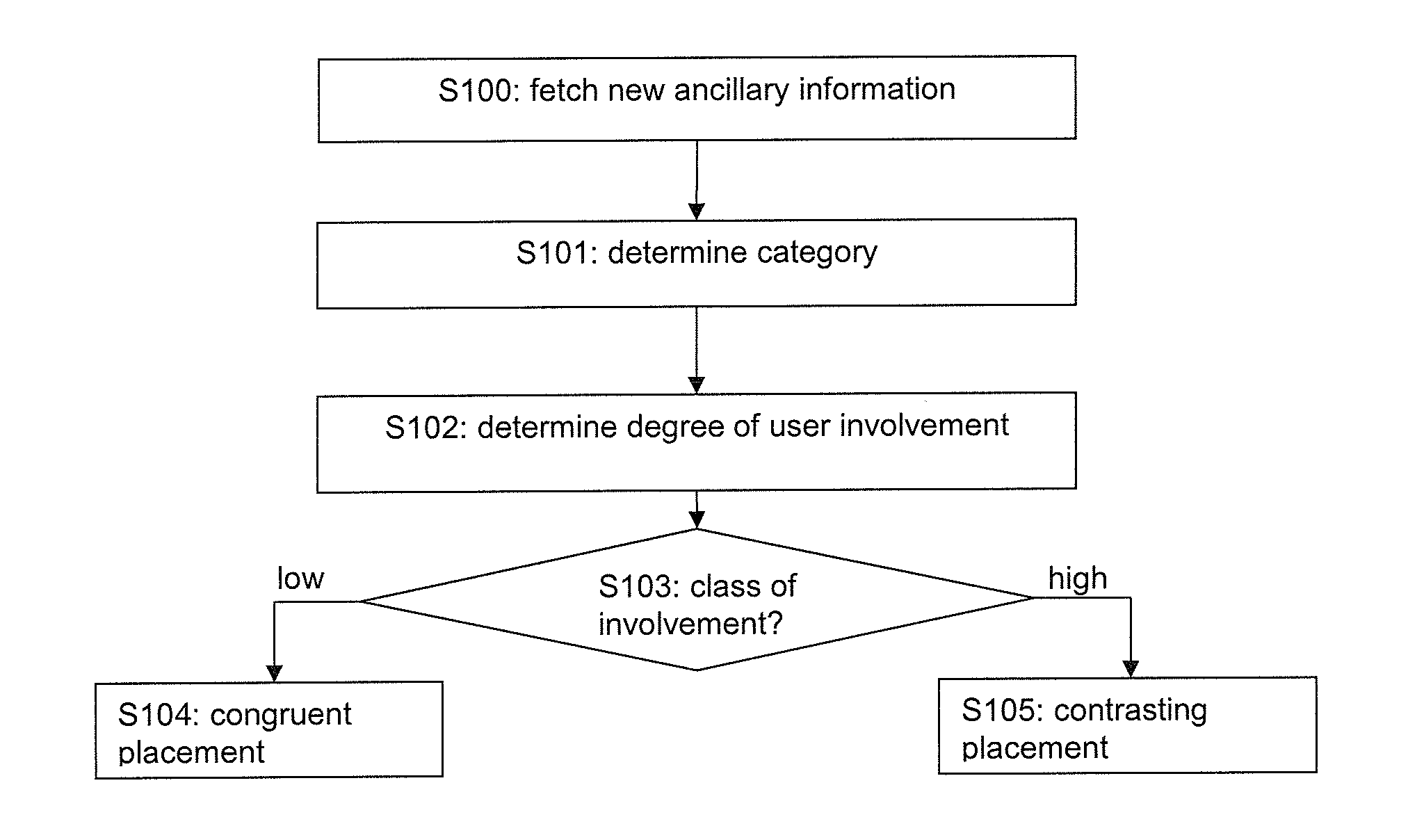Automatic information selection based on involvement classification
- Summary
- Abstract
- Description
- Claims
- Application Information
AI Technical Summary
Benefits of technology
Problems solved by technology
Method used
Image
Examples
first embodiment
[0022]In the following a first embodiment is described based on an exemplary ad placement system. It is however noted that the present invention is not restricted to ad placement and can be implemented in any application where an ancillary, auxiliary or additional information is to be inserted in a content which is accessed (e.g. viewed, listened, read, etc.) by a user.
[0023]FIG. 1 shows a schematic block diagram of the ad placement system of the first embodiment. Given a certain piece of content (CNT) 12 (e.g. a webpage, a TV show, the schedule of a personal channel) from a content data base and / or context (CXT) 14 (e.g. a query sent to a search engine), an ad placement mechanism, engine, or procedure (P) 20 selects one or more ads from a database (DB) 40 of ads that fit the content and a certain user profile (UP) 16 defined by e.g. demographics, viewing history, purchasing history. The ad placement mechanism 20 outputs the selected ancillary information (SAI), which is an ad in th...
second embodiment
[0042]FIG. 2 shows a schematic flow diagram of a generalized selection procedure according to a
[0043]In step S100, new ancillary information is fetched from a respective database where the ancillary information is stored. Then, in step S101, a category of the ancillary information as fetched for insertion into a content is determined, e.g. based on a corresponding indication of the ancillary information or the storage location in the database. Now, a degree of user involvement in the determined category is determined, calculated or estimated in step S102. The obtained degree of user involvement is classified in step S103 into the categories “low” involvement and “high” involvement. Of course, a higher number of categories (such as “low”, “medium”, and “high” or additionally “very low” and “very high”) or other types of categories (such as “+”, “0”, and “−” or negative and / or positive numbers etc.) could be used as well. Then, more placement options could be provided.
[0044]In the pre...
PUM
 Login to View More
Login to View More Abstract
Description
Claims
Application Information
 Login to View More
Login to View More - R&D
- Intellectual Property
- Life Sciences
- Materials
- Tech Scout
- Unparalleled Data Quality
- Higher Quality Content
- 60% Fewer Hallucinations
Browse by: Latest US Patents, China's latest patents, Technical Efficacy Thesaurus, Application Domain, Technology Topic, Popular Technical Reports.
© 2025 PatSnap. All rights reserved.Legal|Privacy policy|Modern Slavery Act Transparency Statement|Sitemap|About US| Contact US: help@patsnap.com



